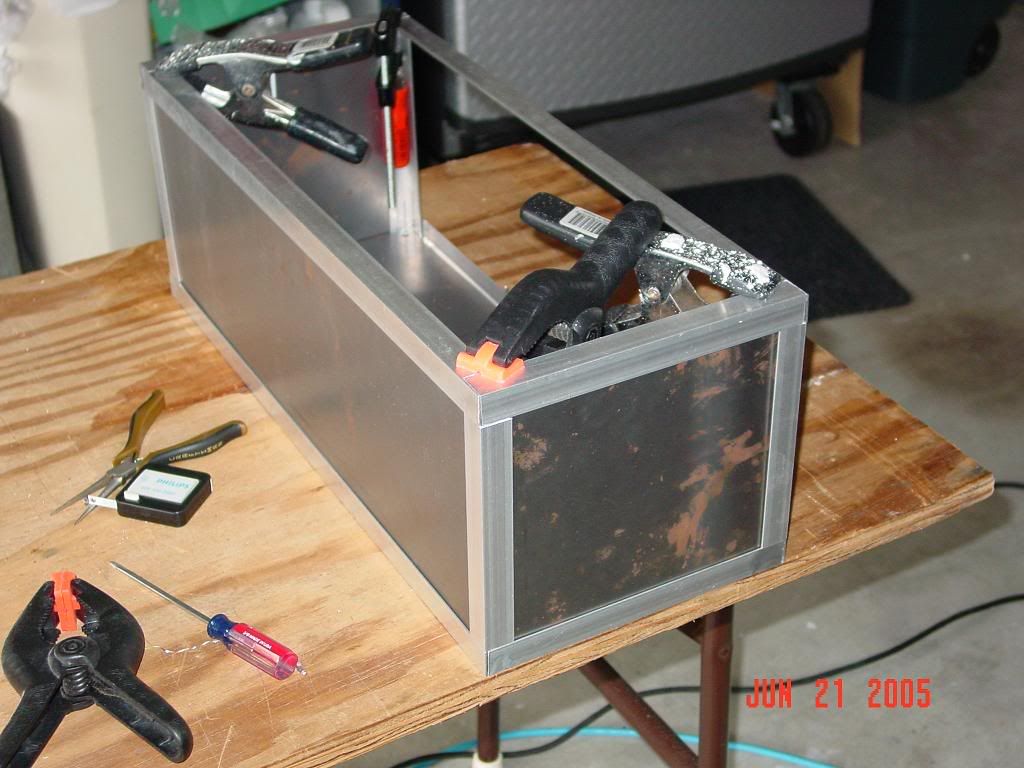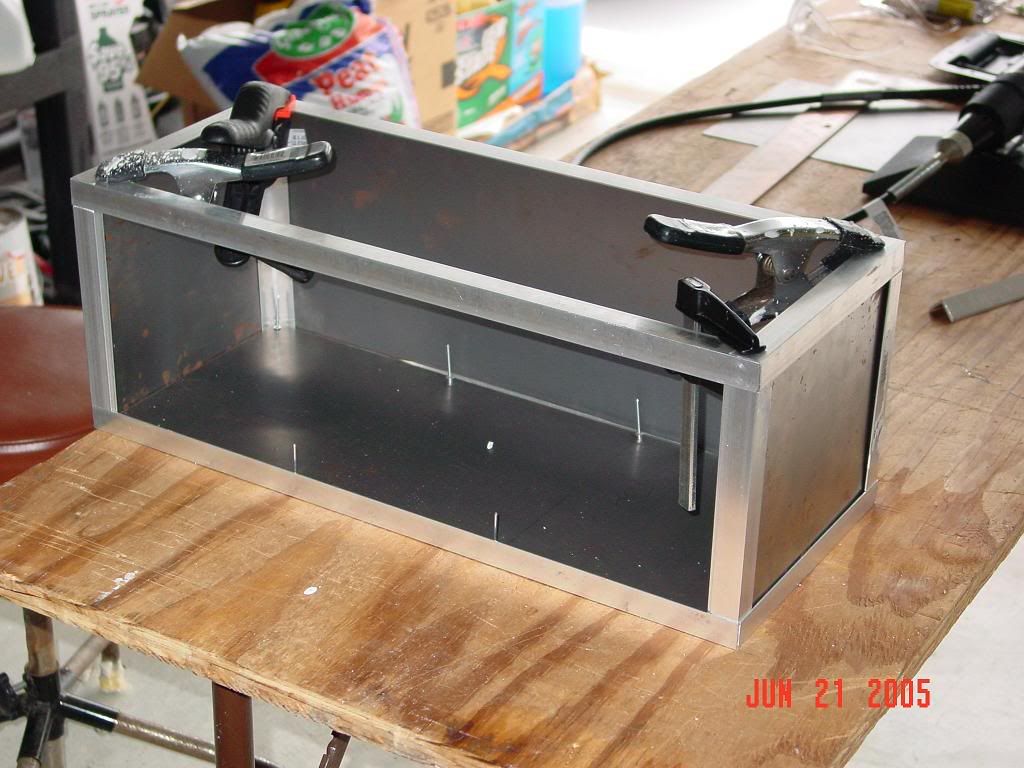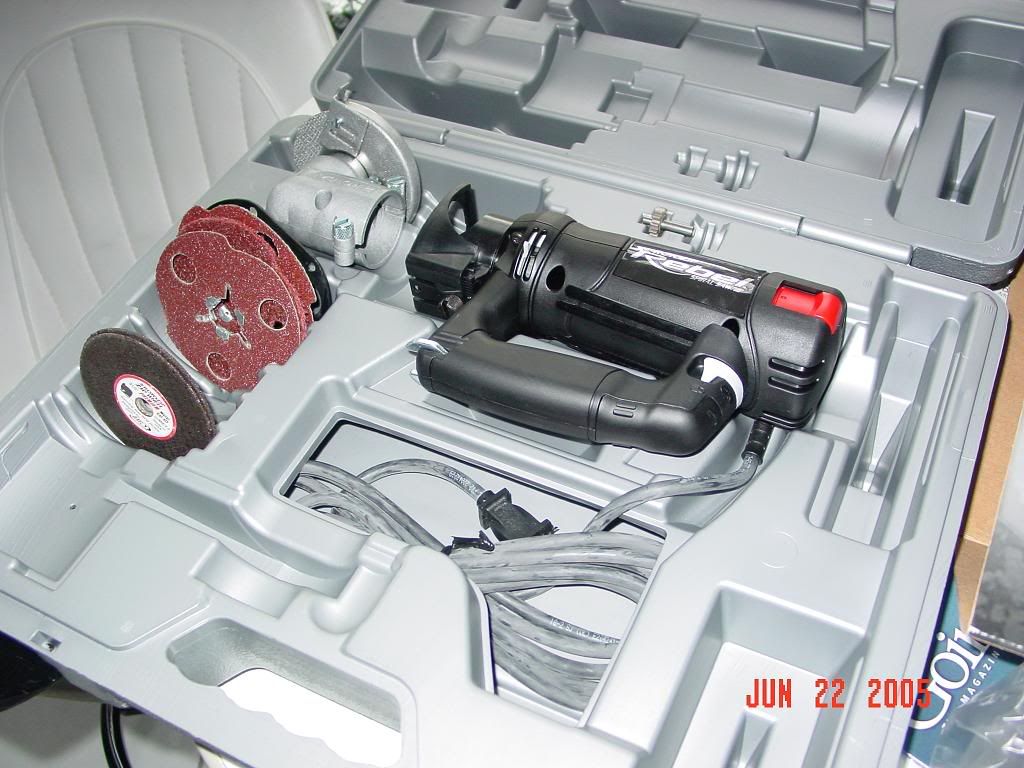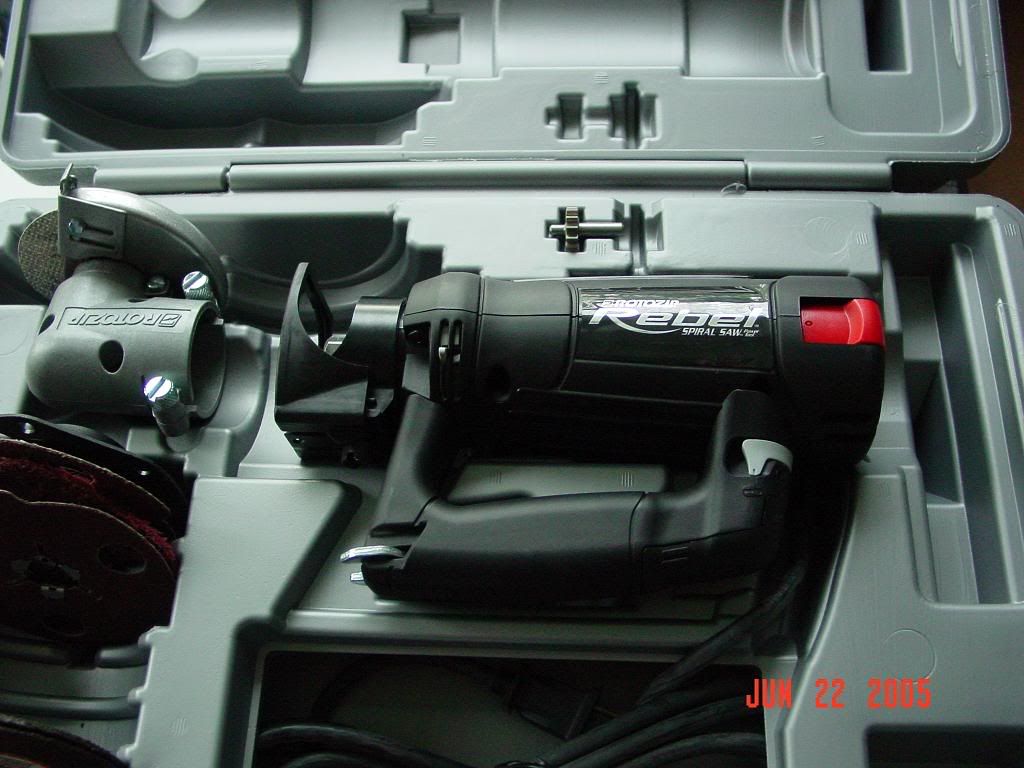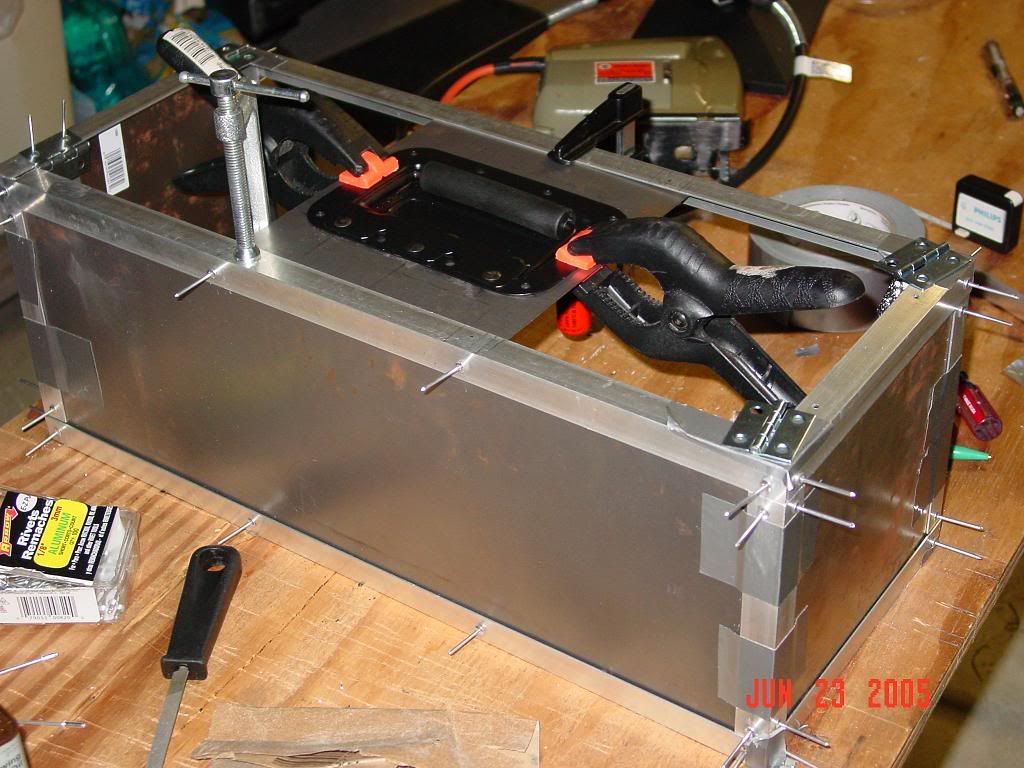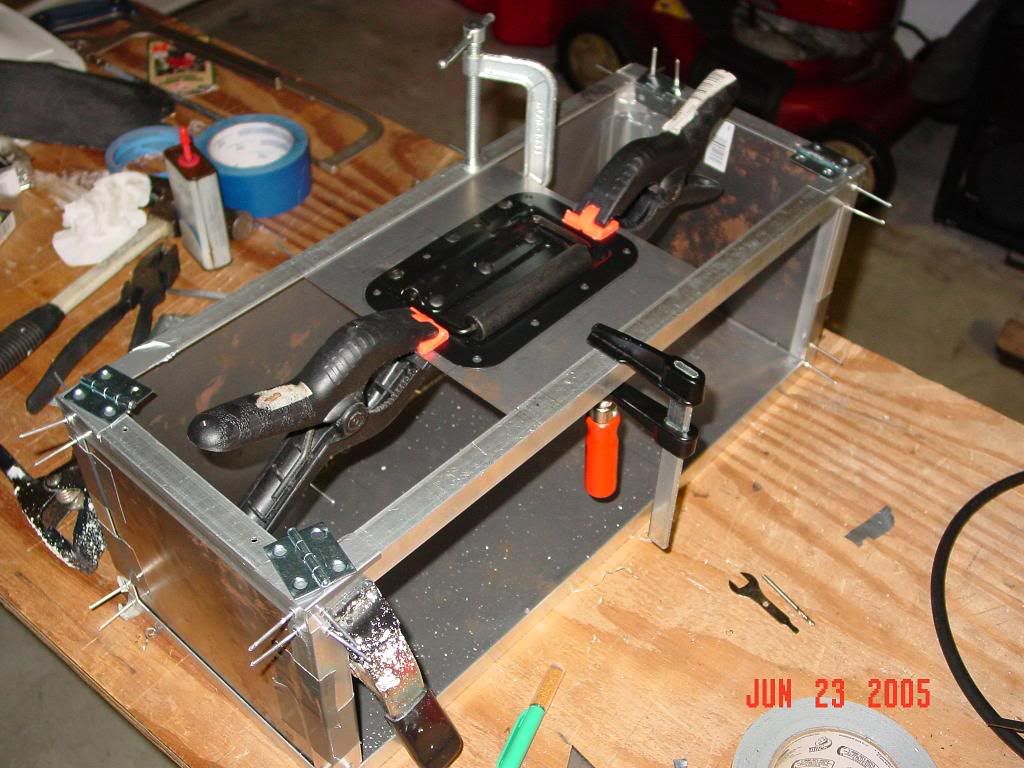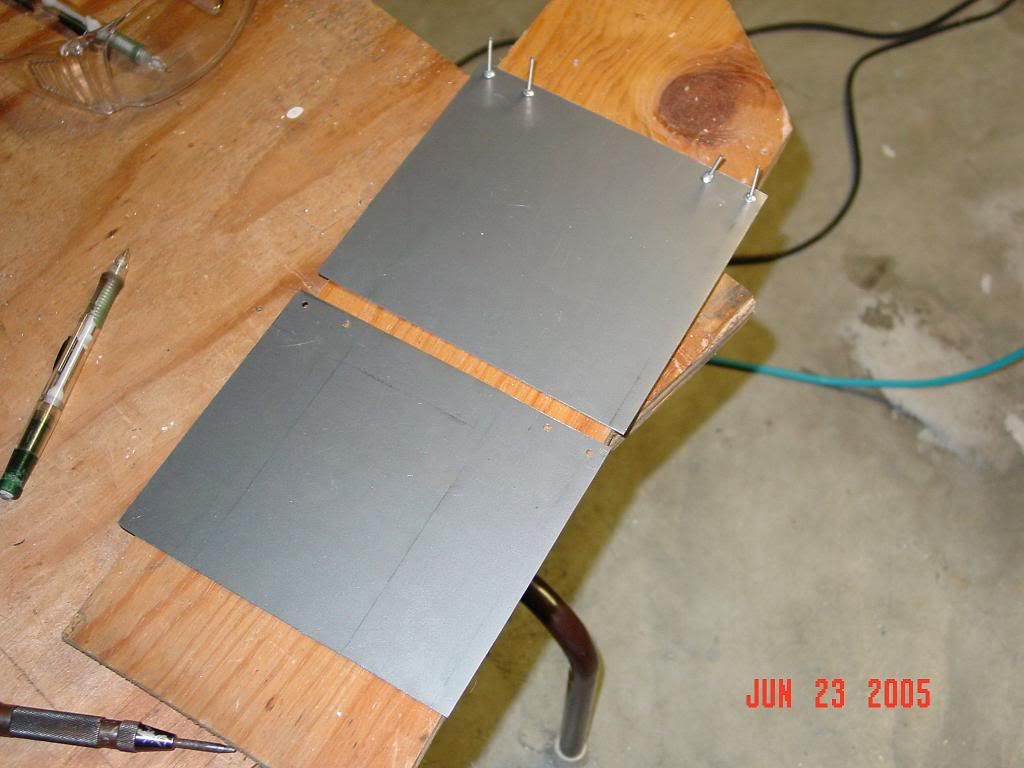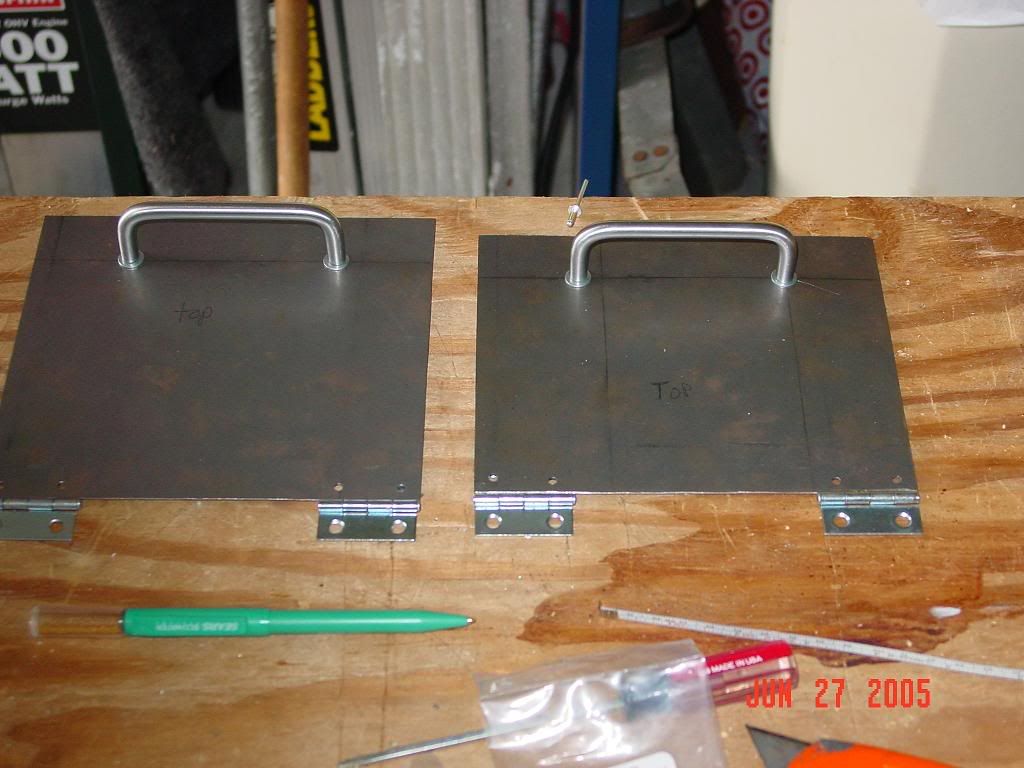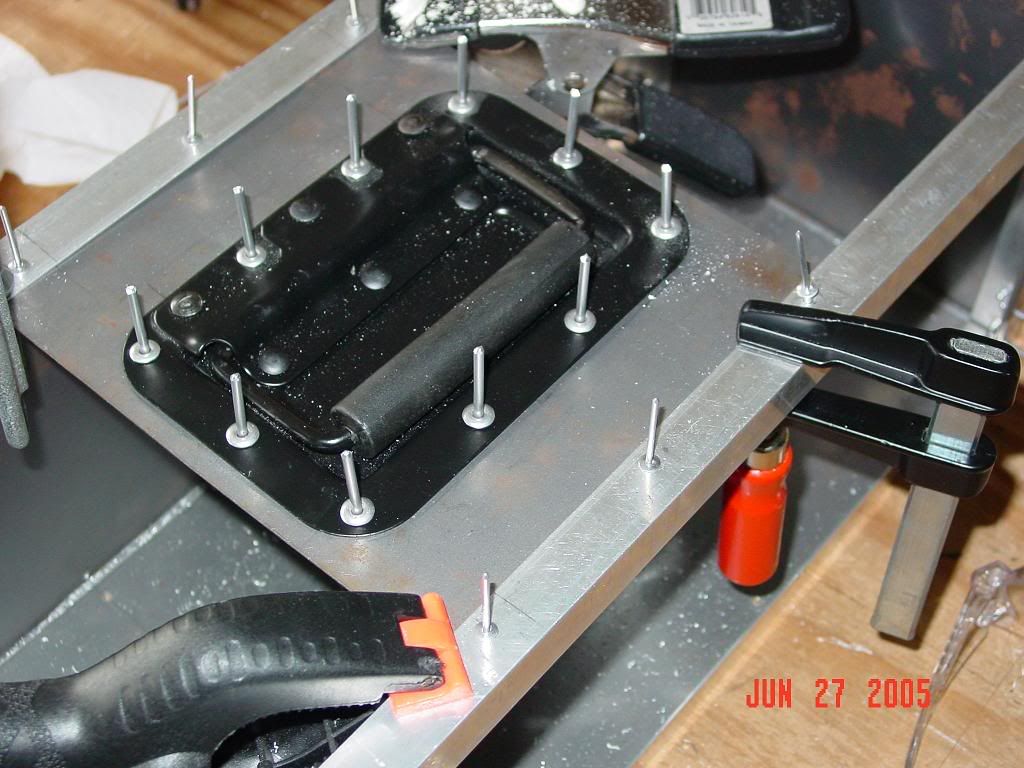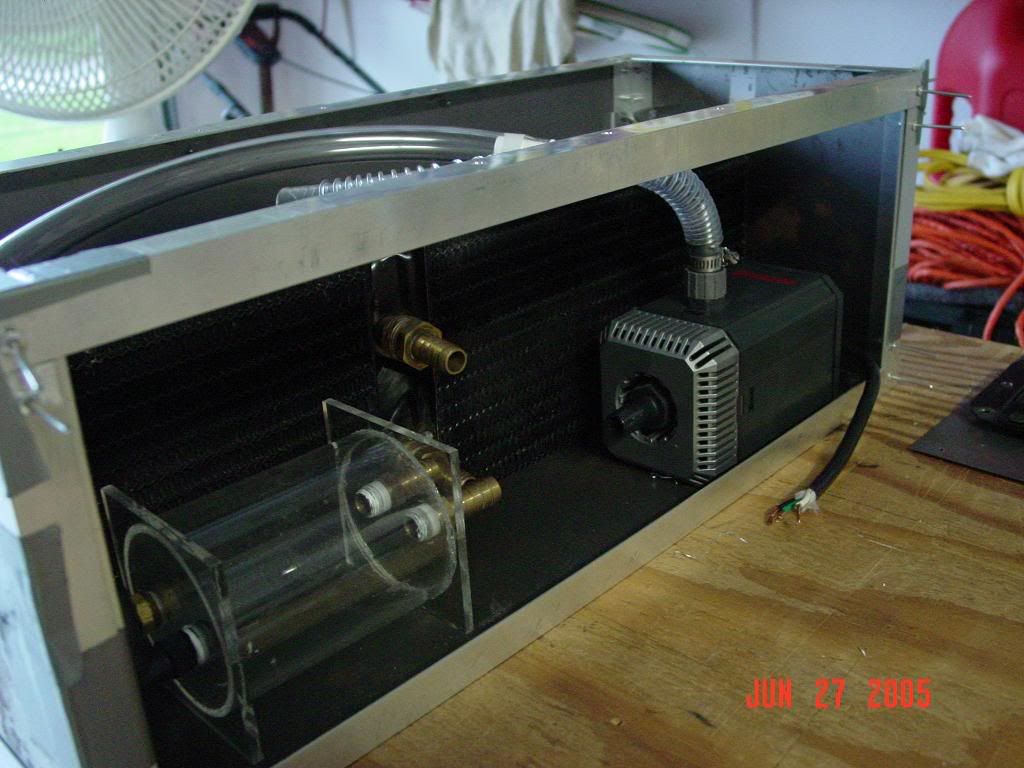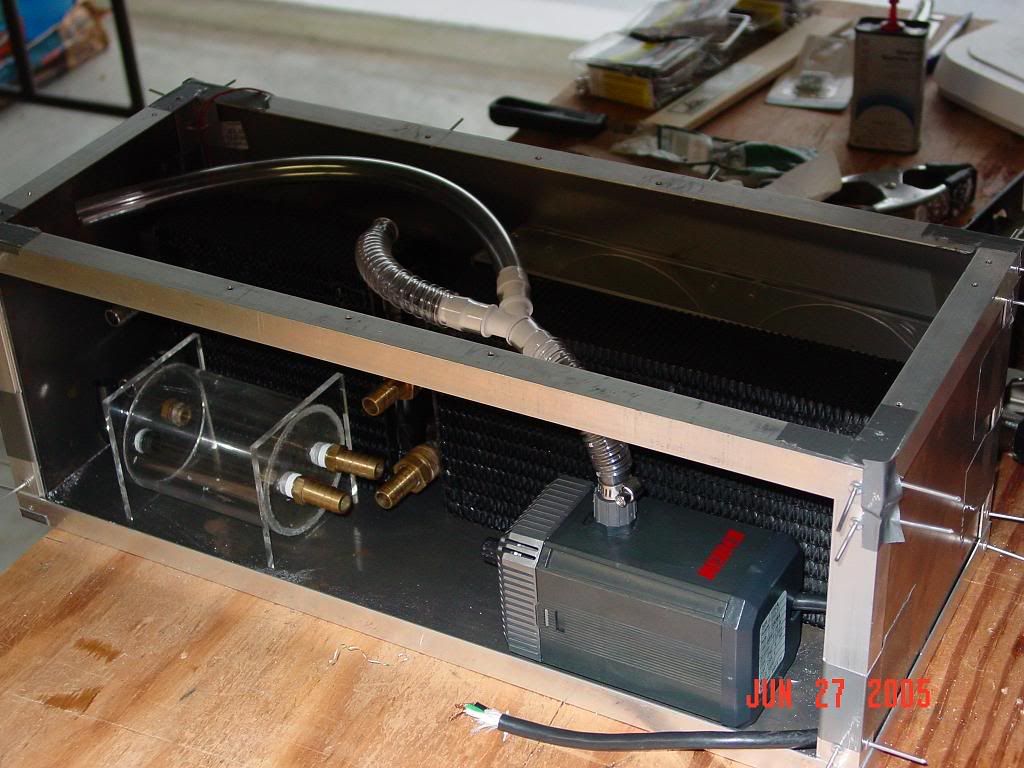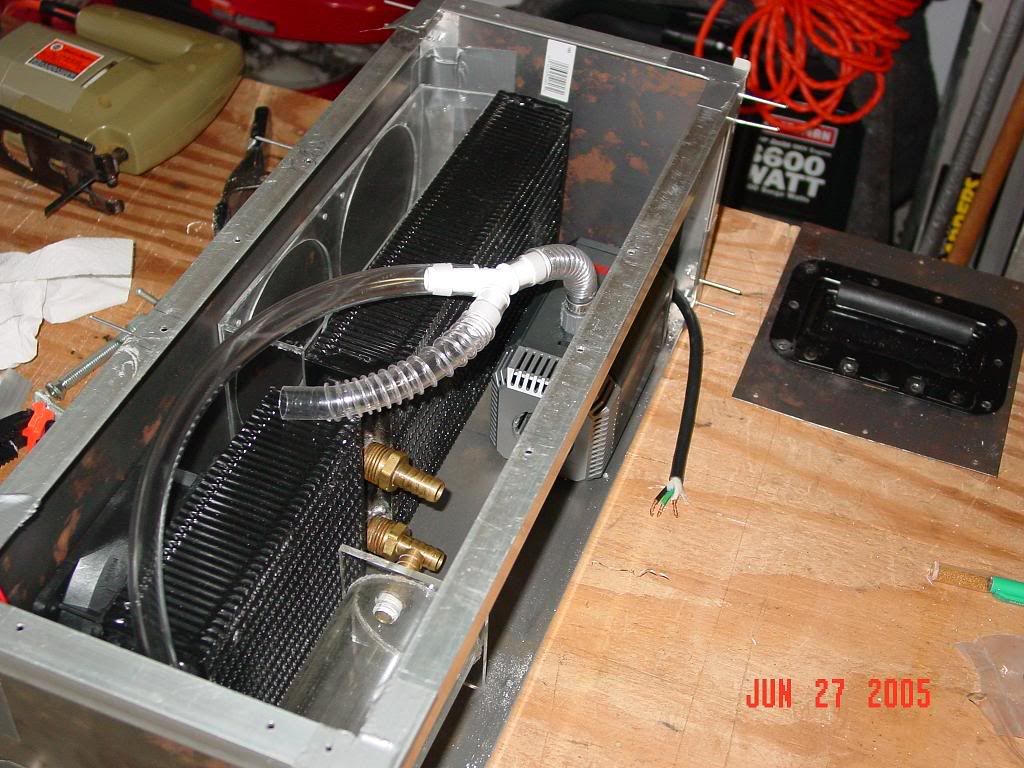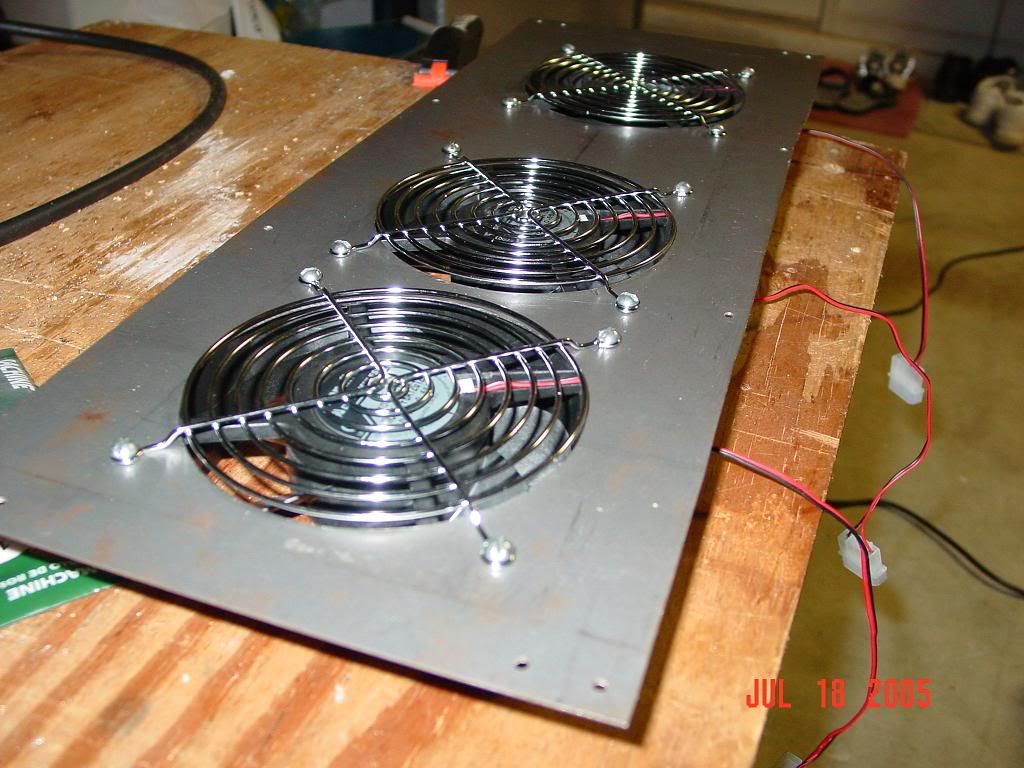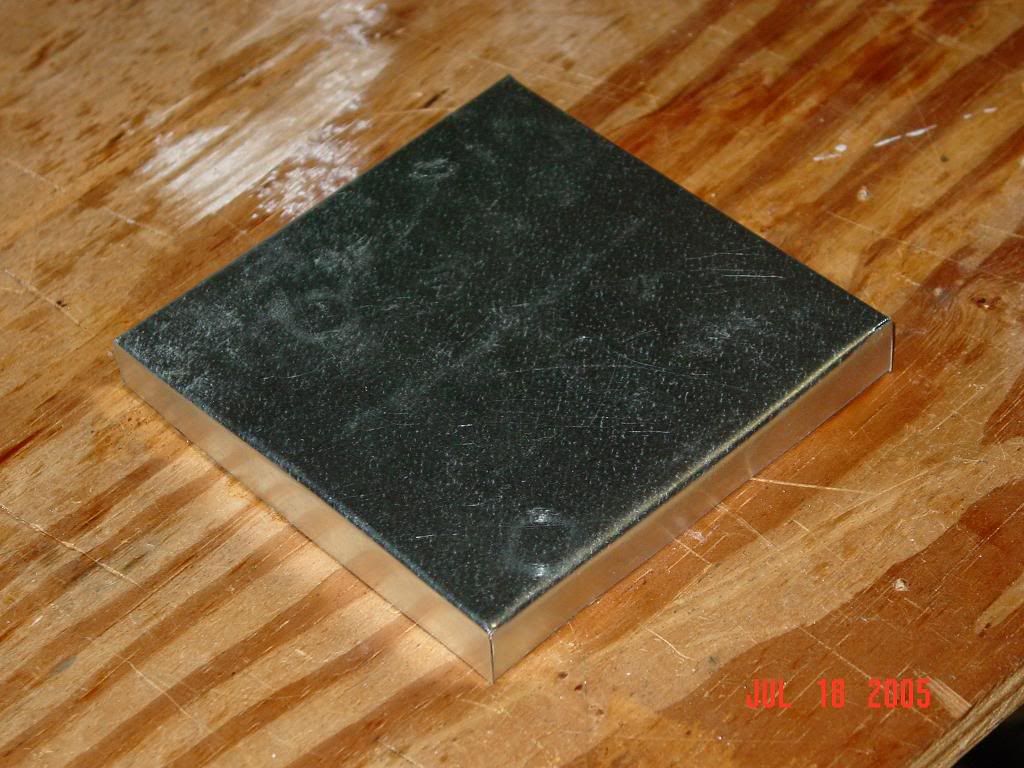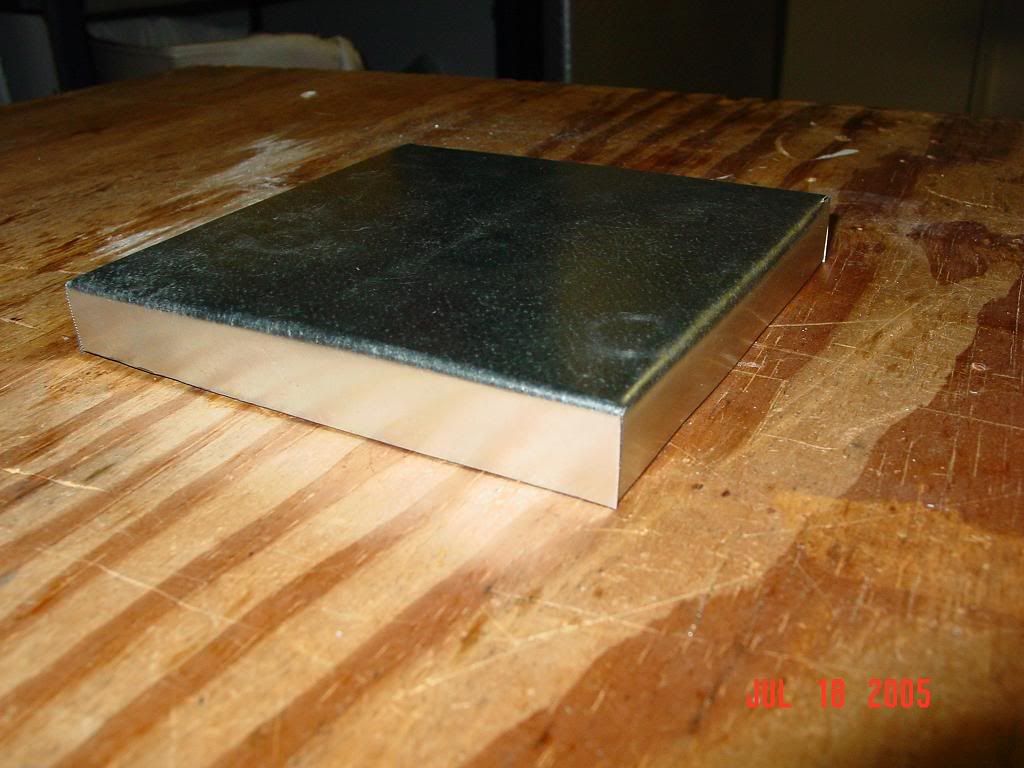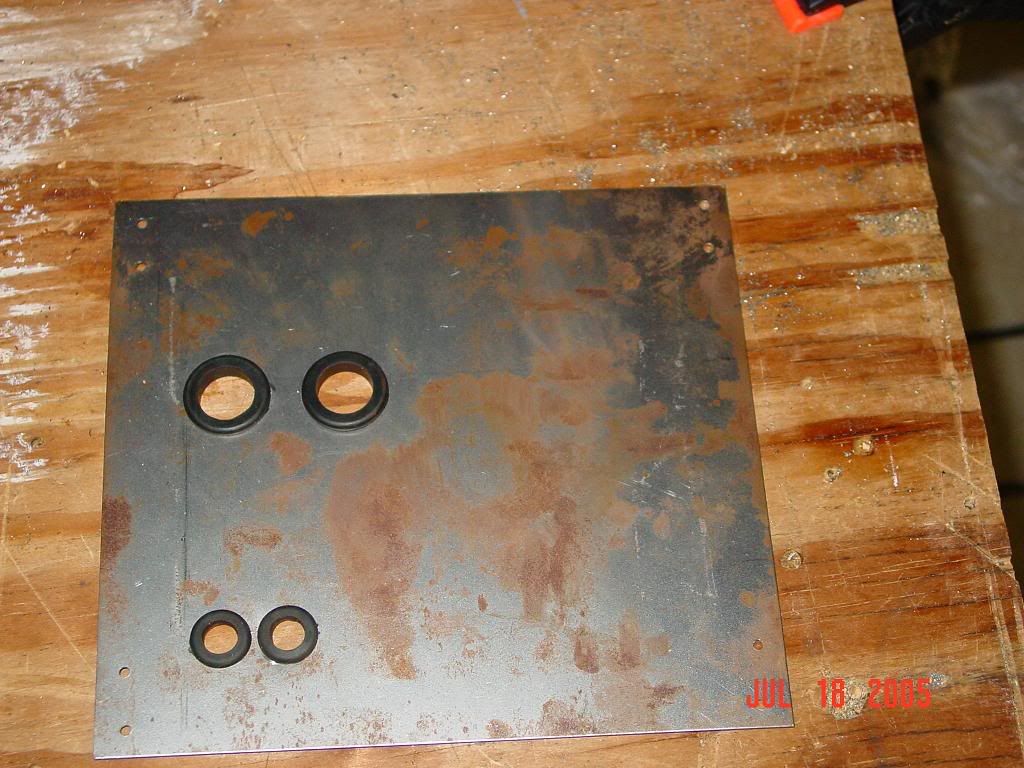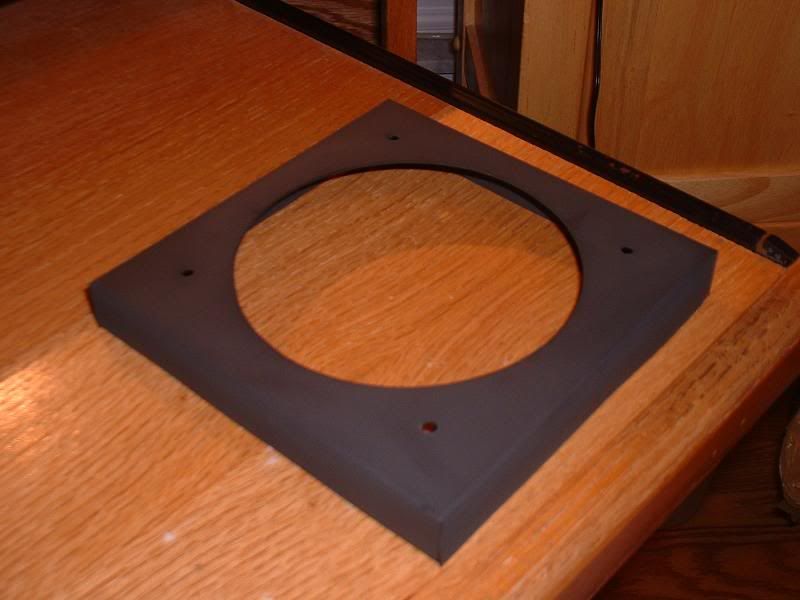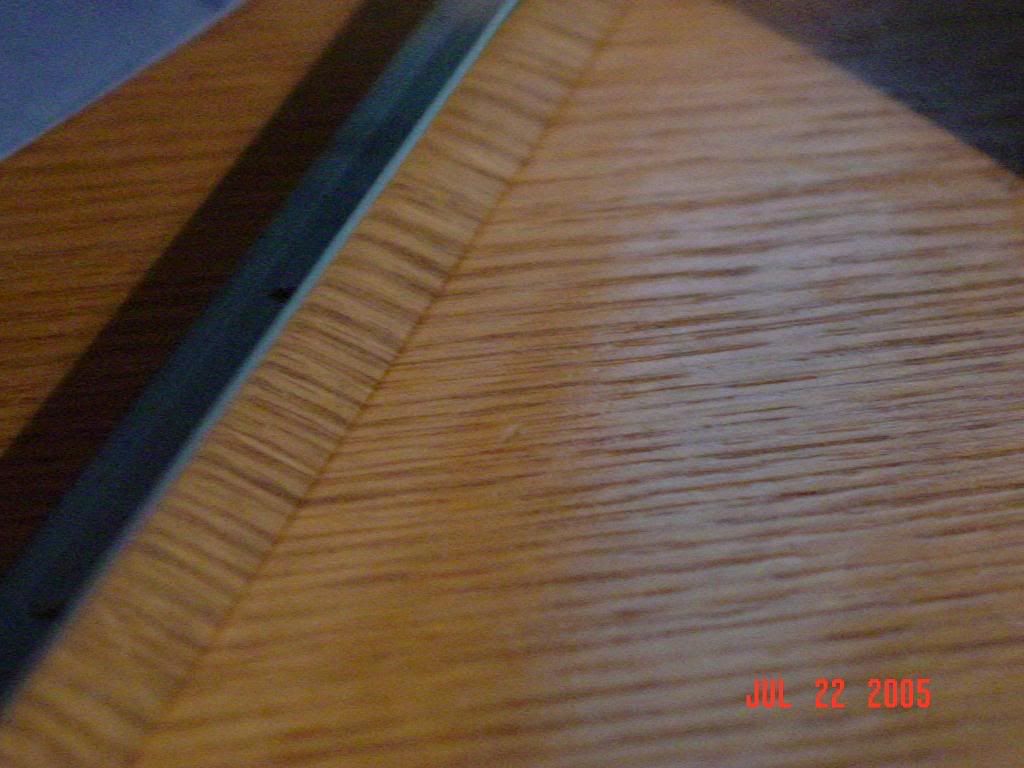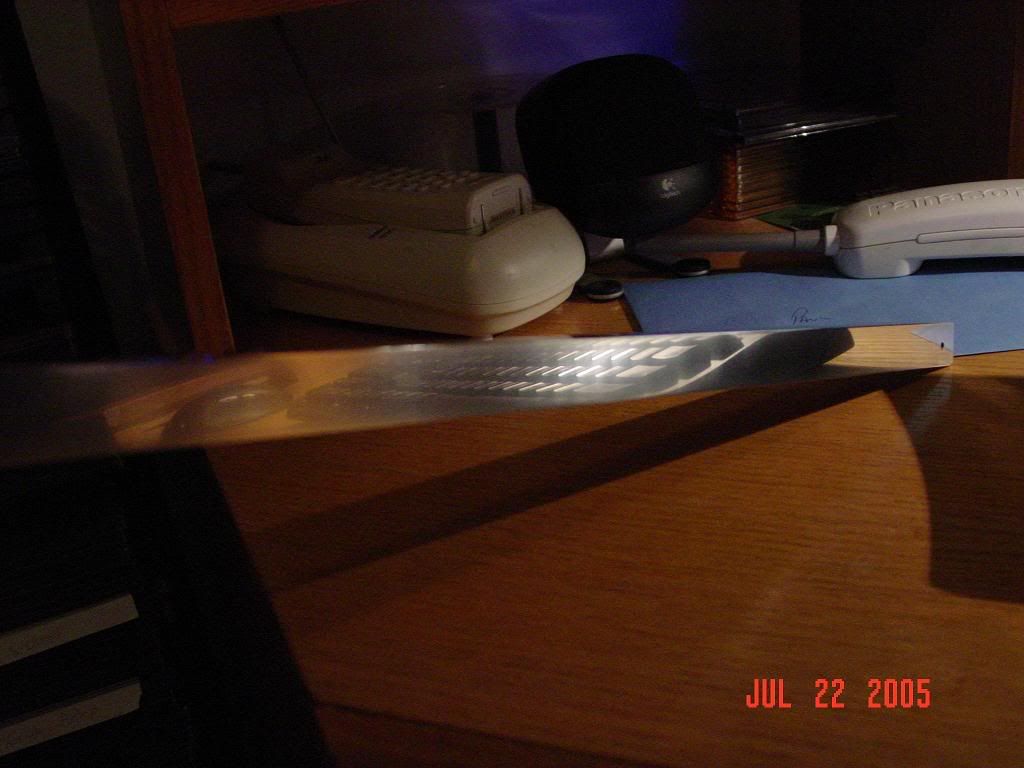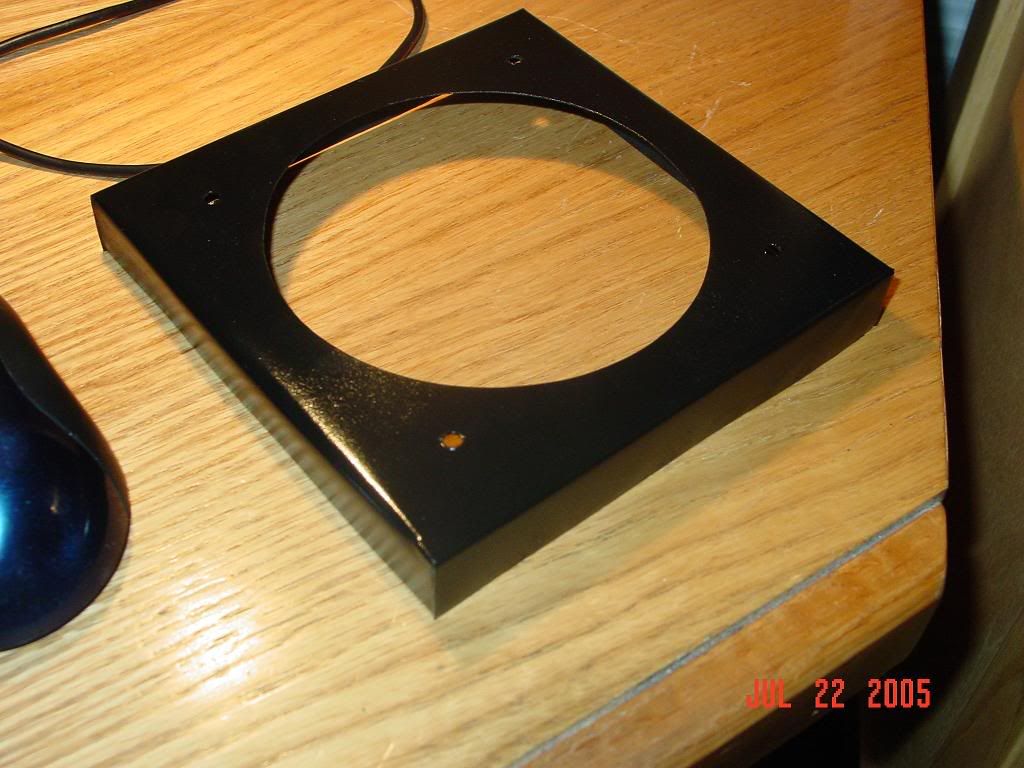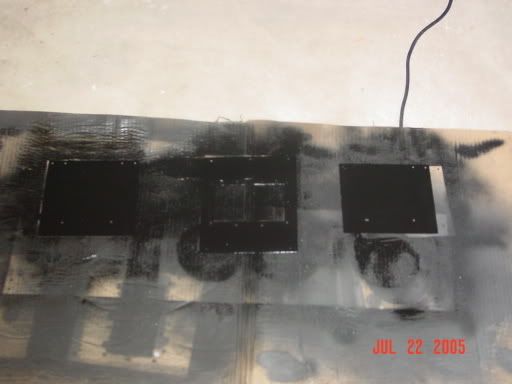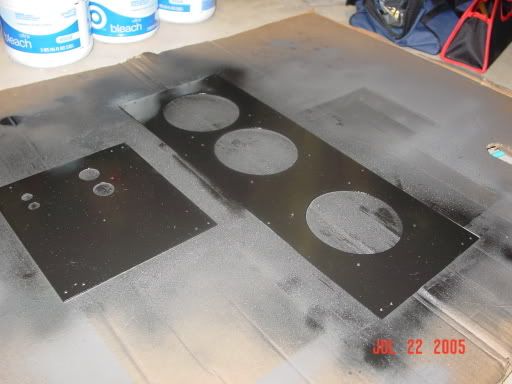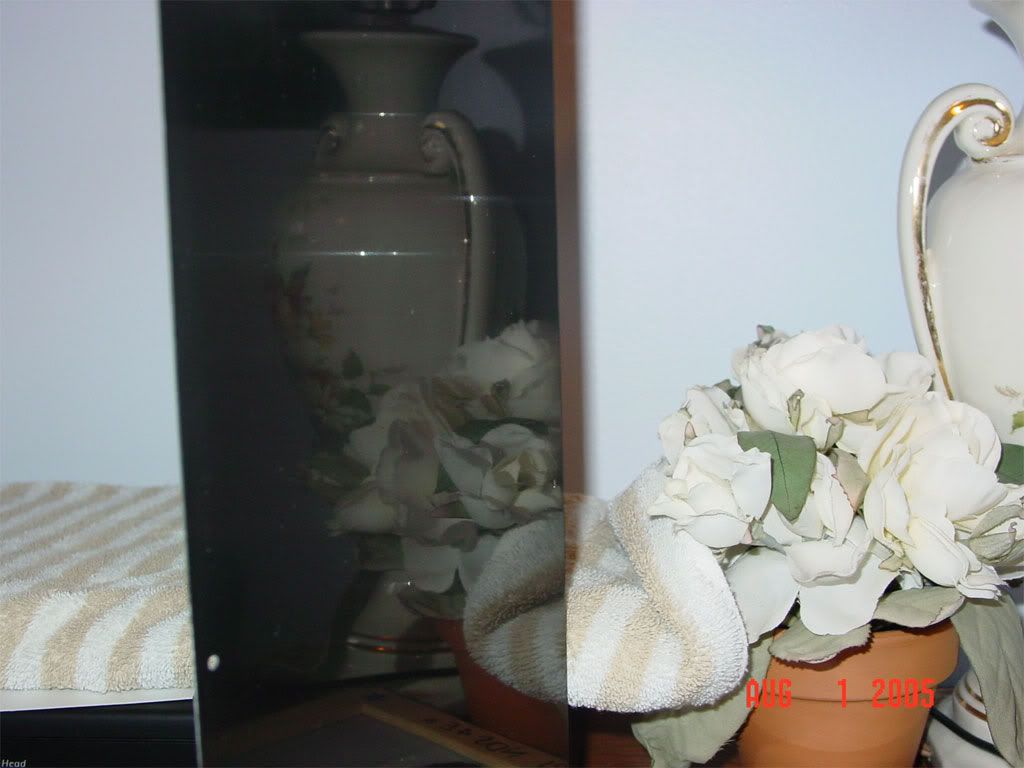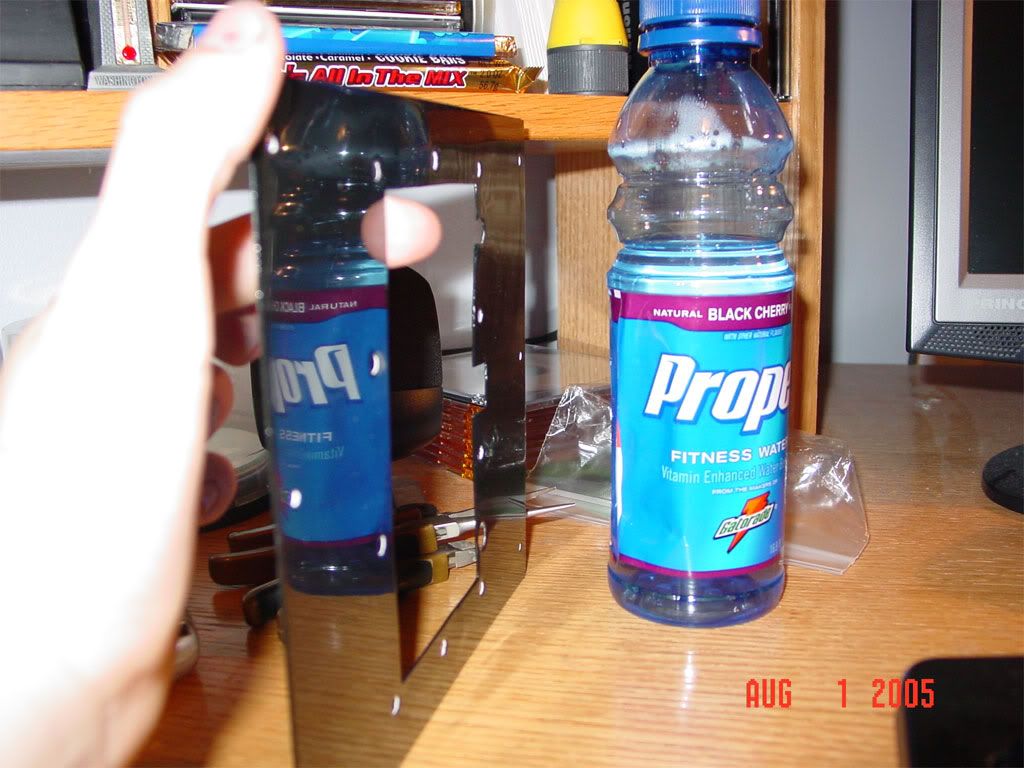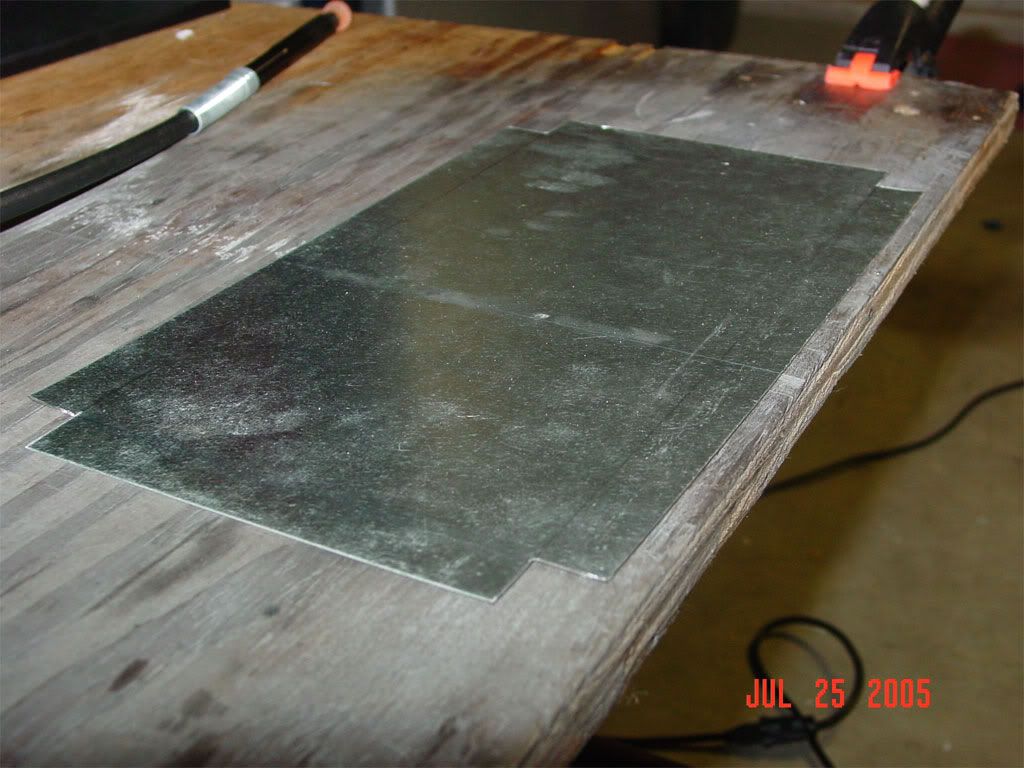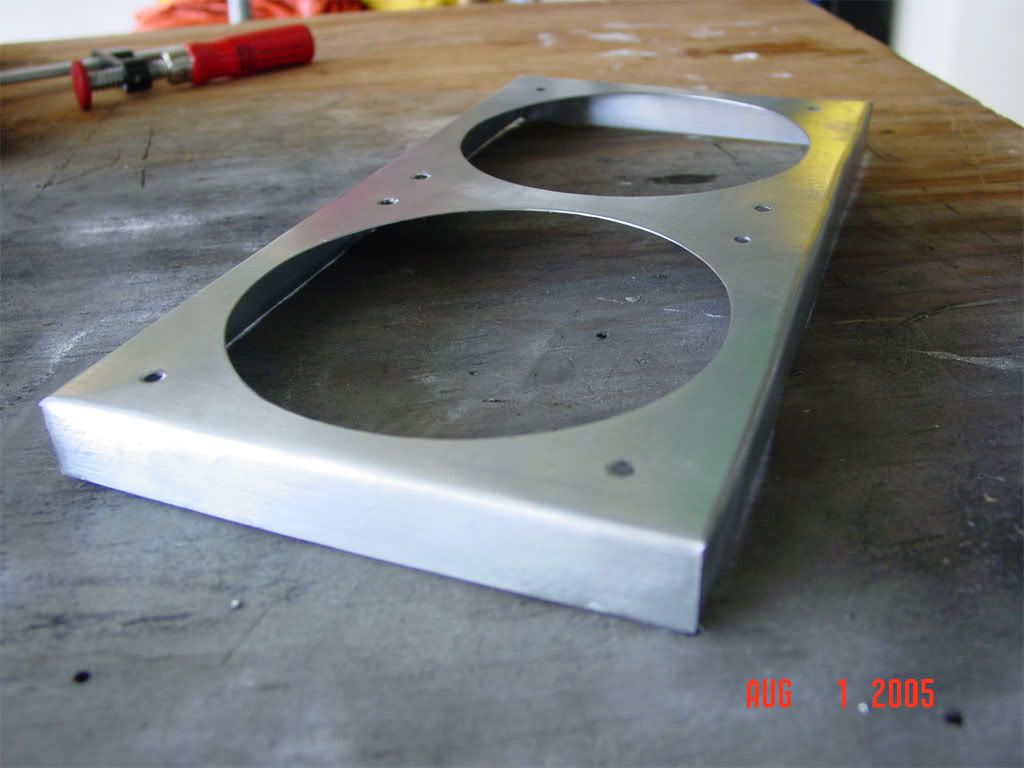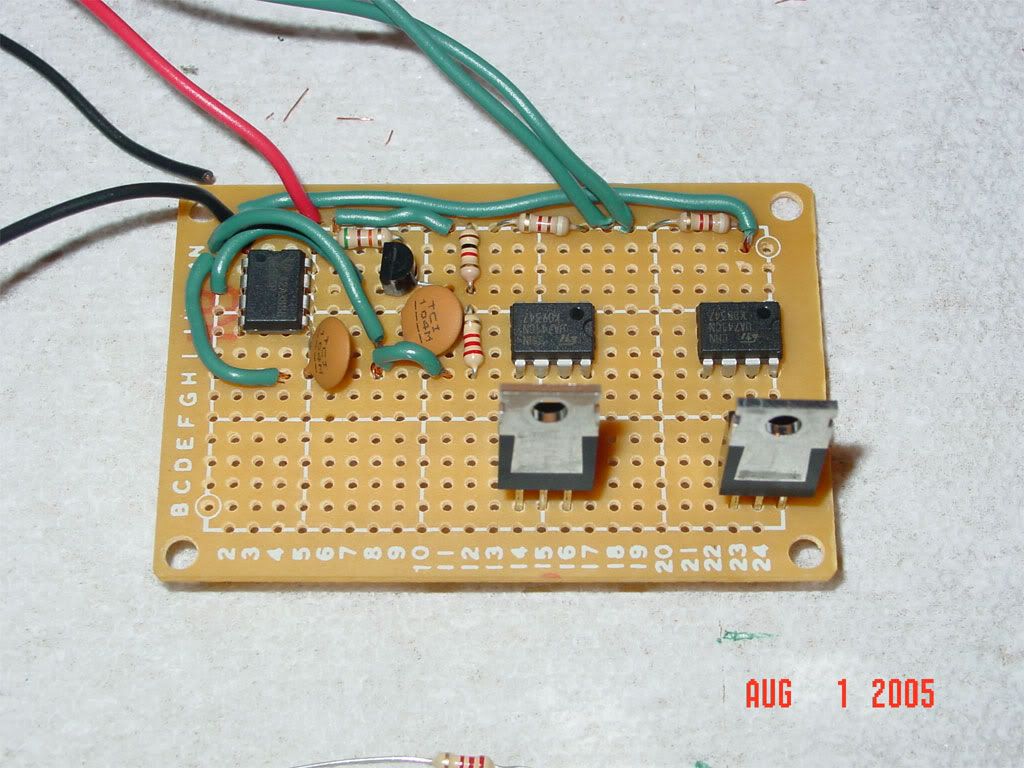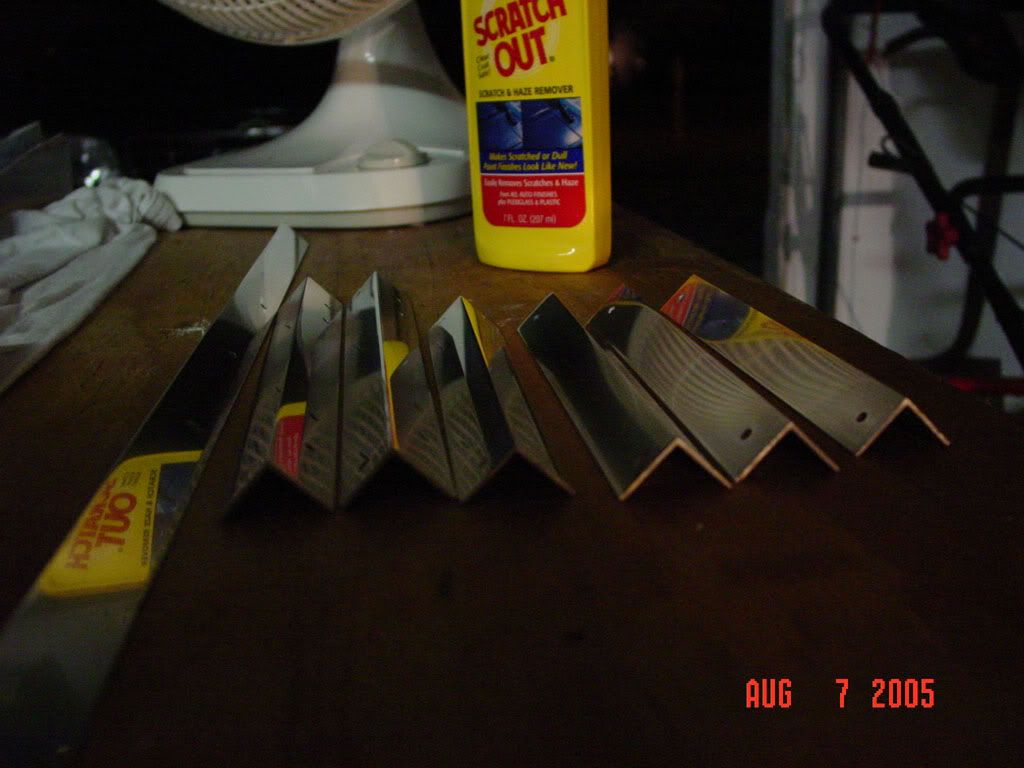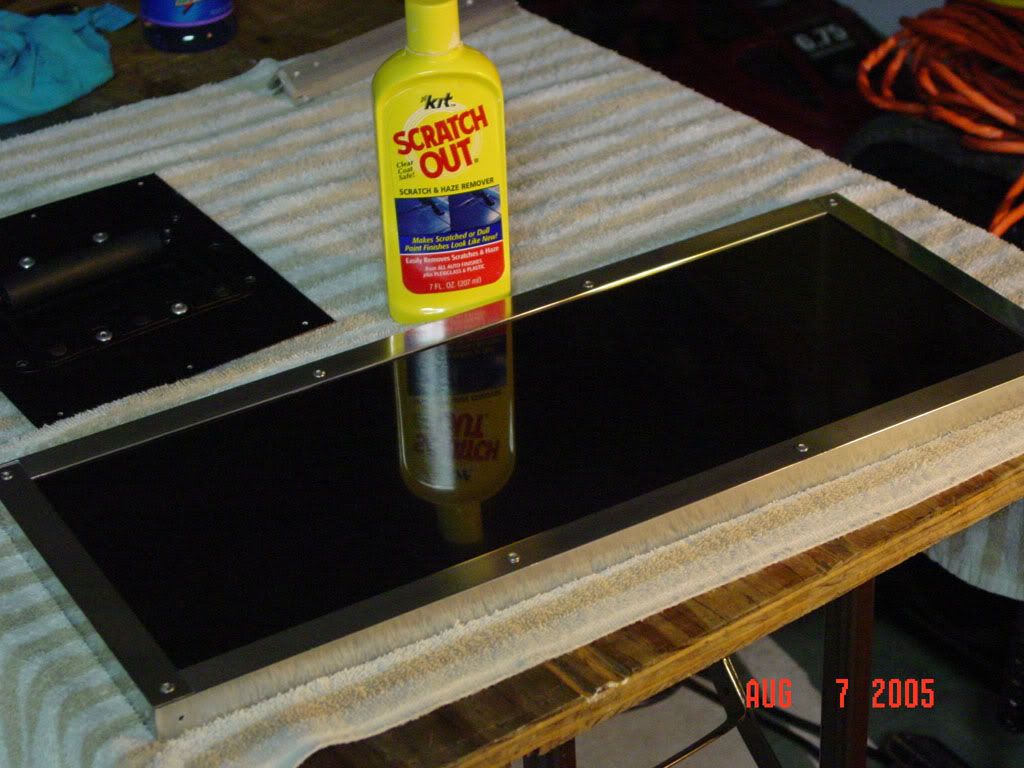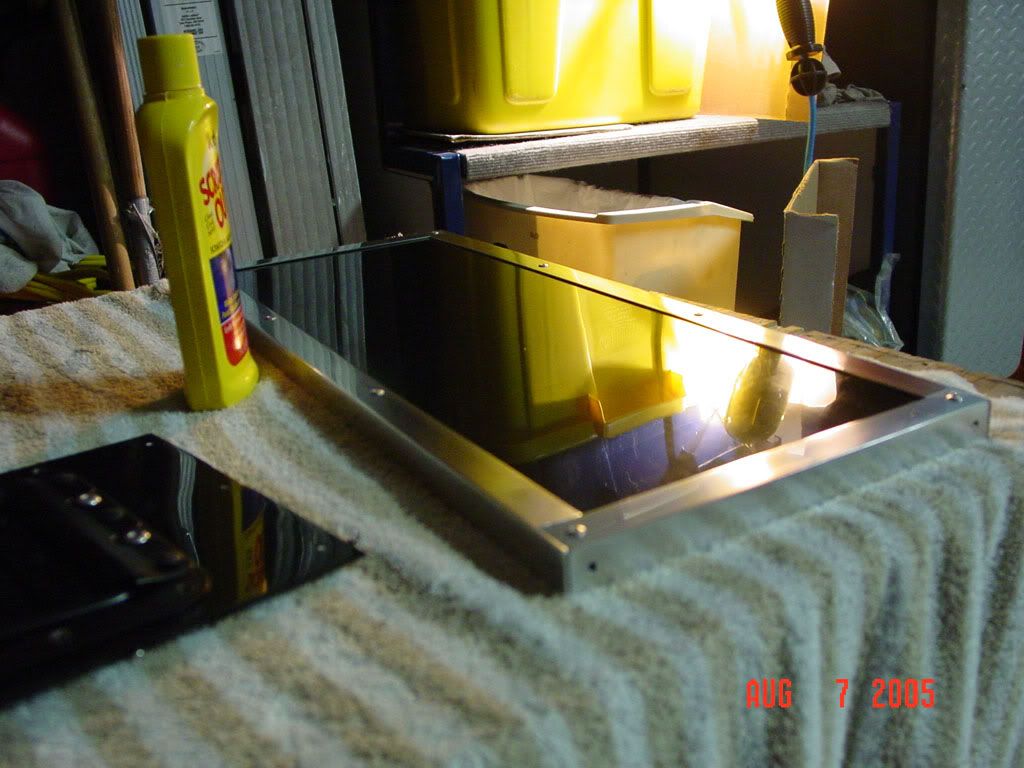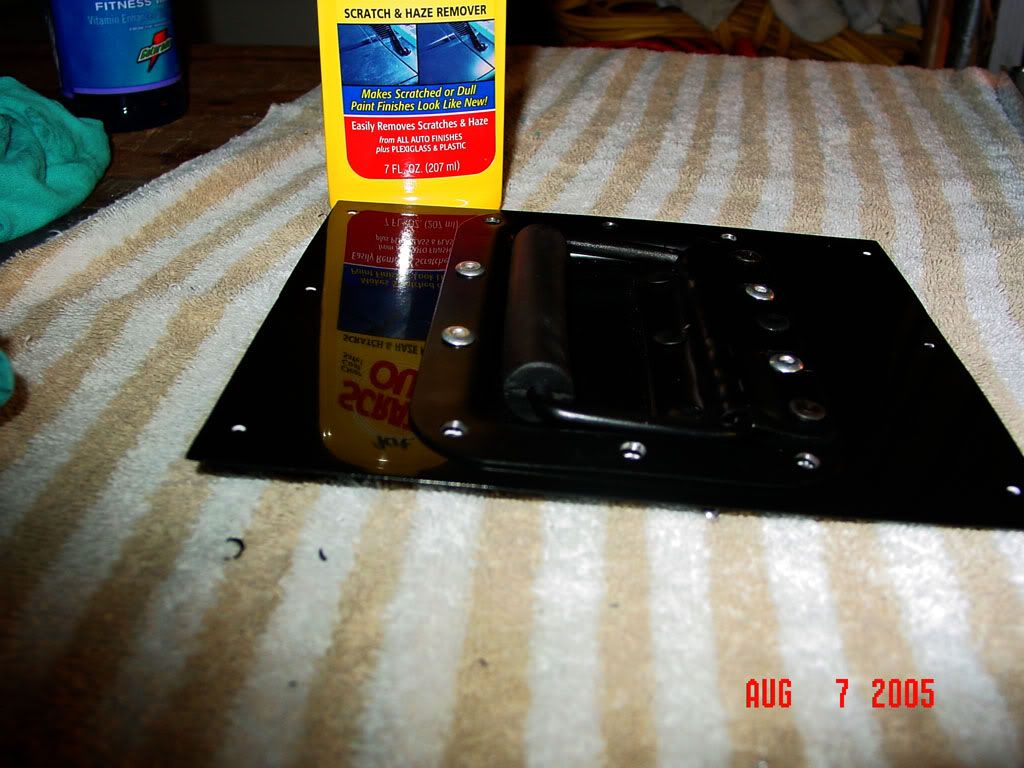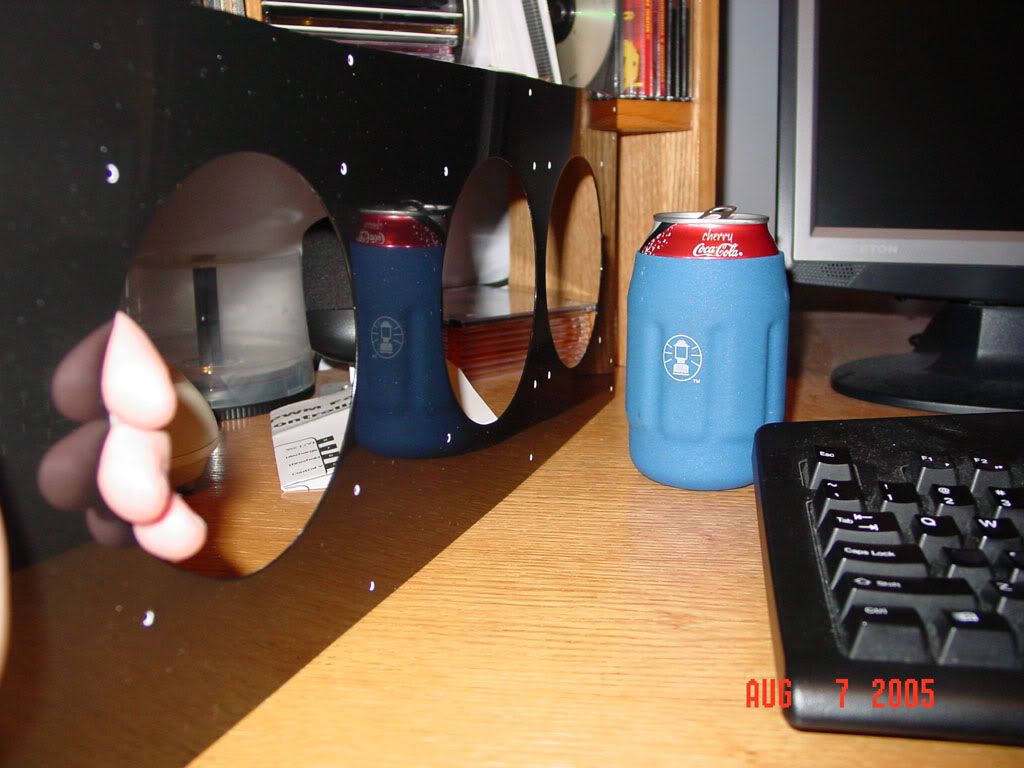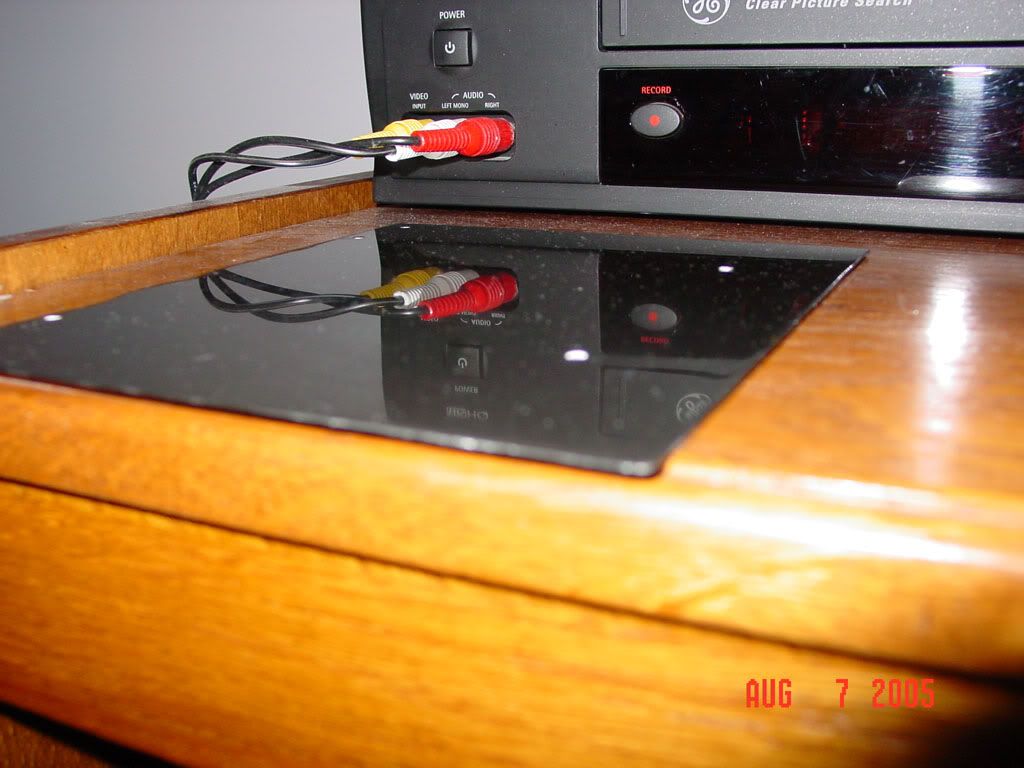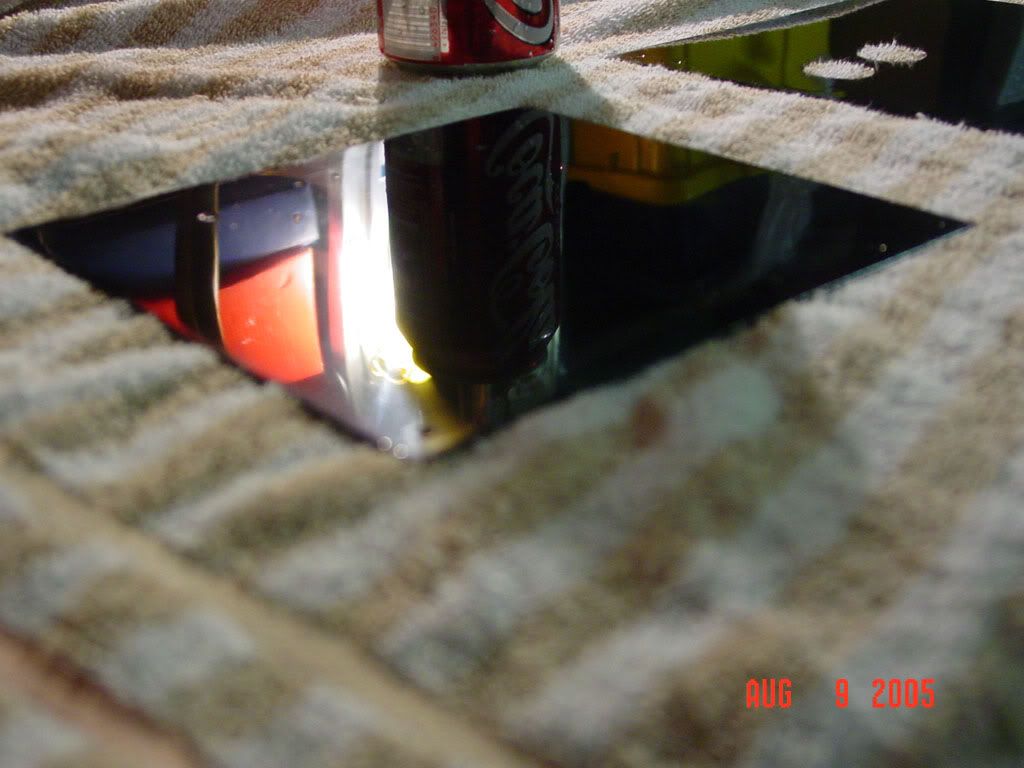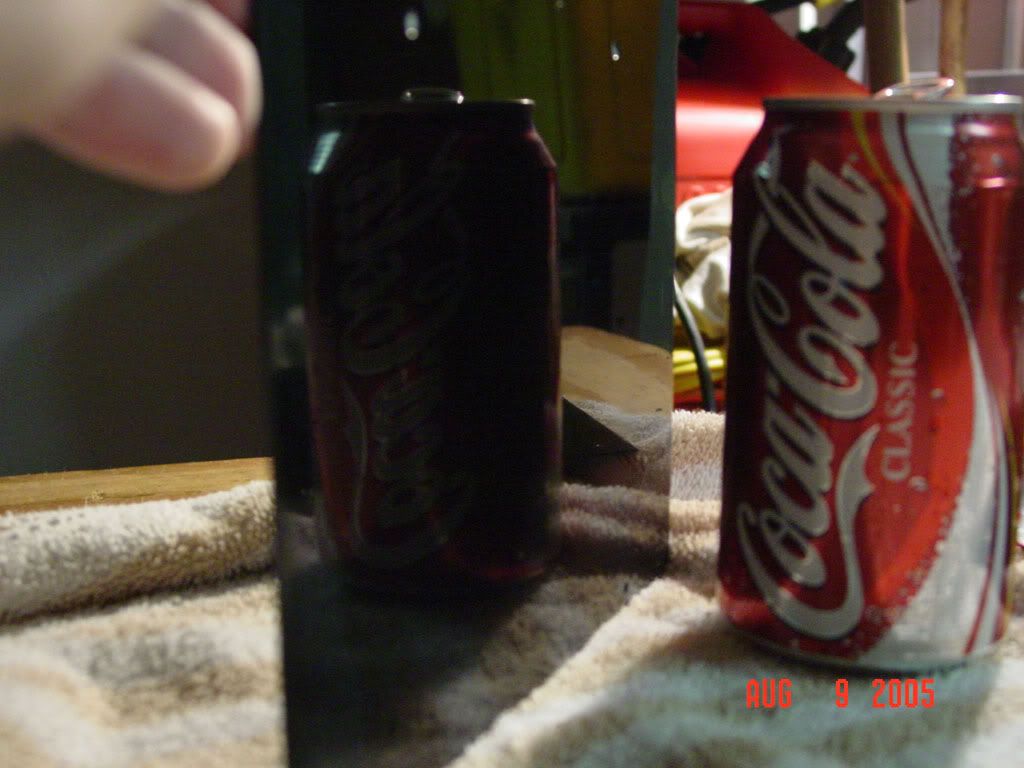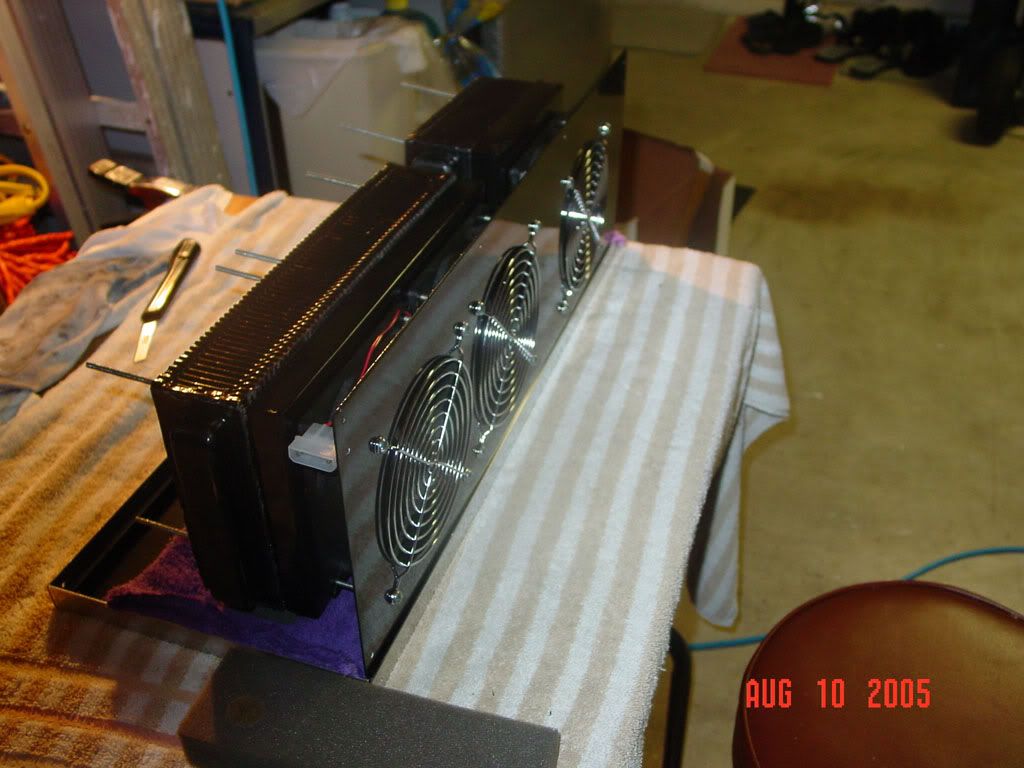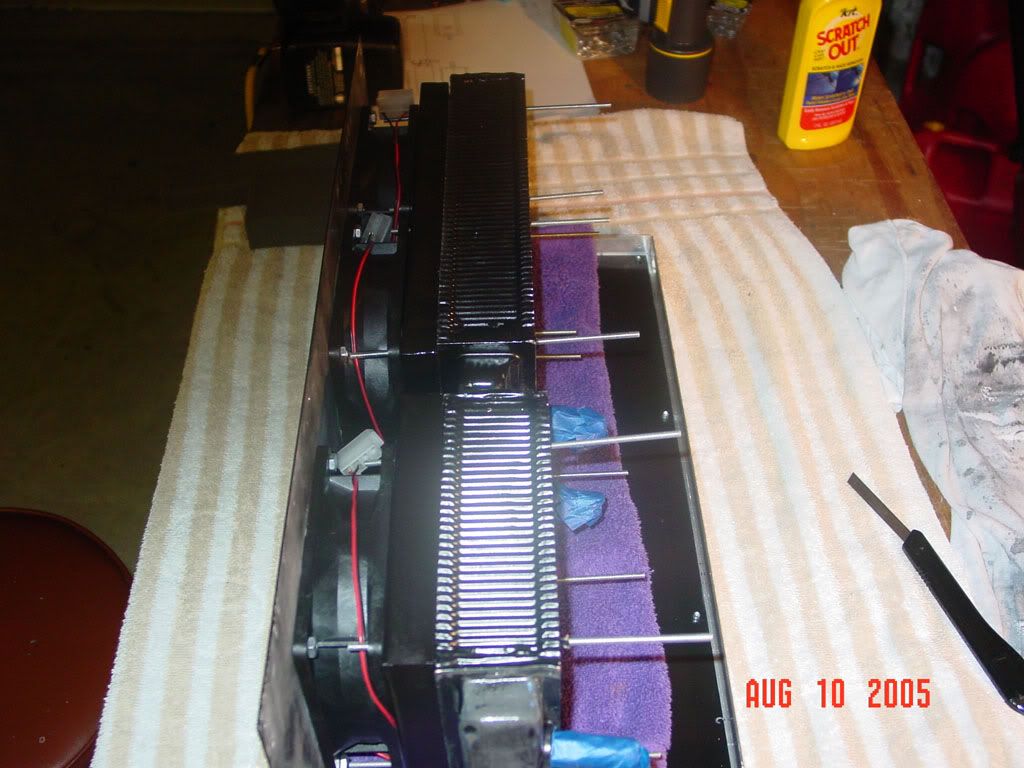DarkenReaper57
2[H]4U
- Joined
- Oct 2, 2003
- Messages
- 2,173
Well, I've been working on this project on and off for the past month or so, so I decided to create a worklog.
To sum it up, I am building an external w/c box that will sit on top of my case. Inside it will have dual radiators, a pump, a res, fans, and a fan controller.
I haven't finished a ton yet as I have been trying to carefully plan things out (I am a metal-working newbie) but at least it looks like I am getting somewhere.
Here is a rough autocad picture of what I am doing on the inside, although I have flipped the radiators and moved around some components in the final design.

Here is the list of parts:
Eheim 1250
77' Bonneville heater core
86' Chevette heater core
D-tek Whitewater CPU block
D-tek GPU block w/ homemade adapter for 6800 GT
3 Panaflo U1A fans
Plexiglass shroud for the bonnie core from a previous project
36'' x 48'' sheet of 22 AWG steel
8'' x 18'' sheet of 22 AWG steel
1 Zinc plated recessed handle (I love this thing)
16' of angled aluminum for the frame
Some aluminum mesh
Other misc stuff (black car paint, primer, screws, rivets, etc)
Anyway, here is a pic after I made the top and bottom frame:
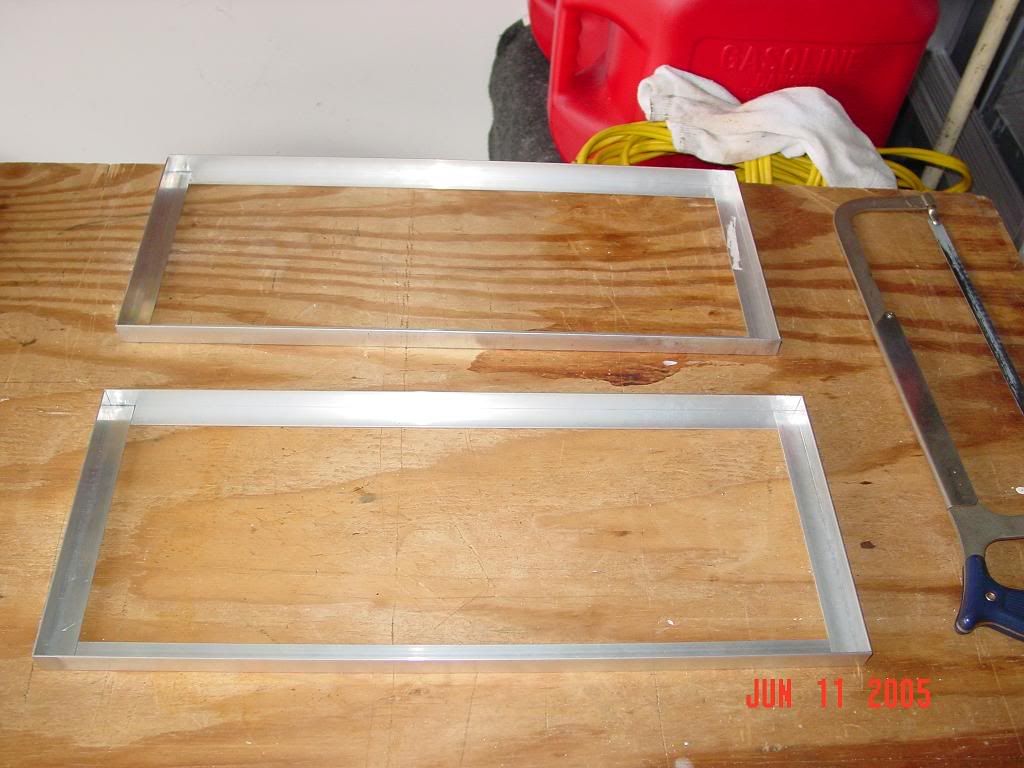
Some of the inside parts, half put together. I decided to finish assembly one the box is completed - it makes more sense that way.
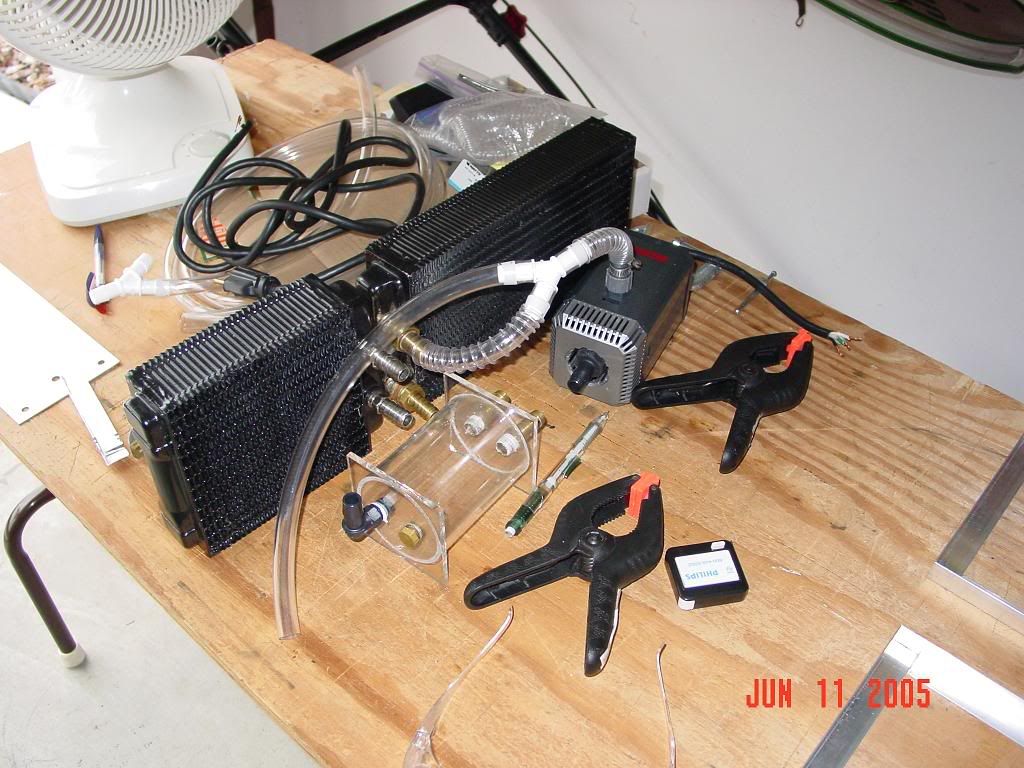
Some of the materials that will be used to make the box
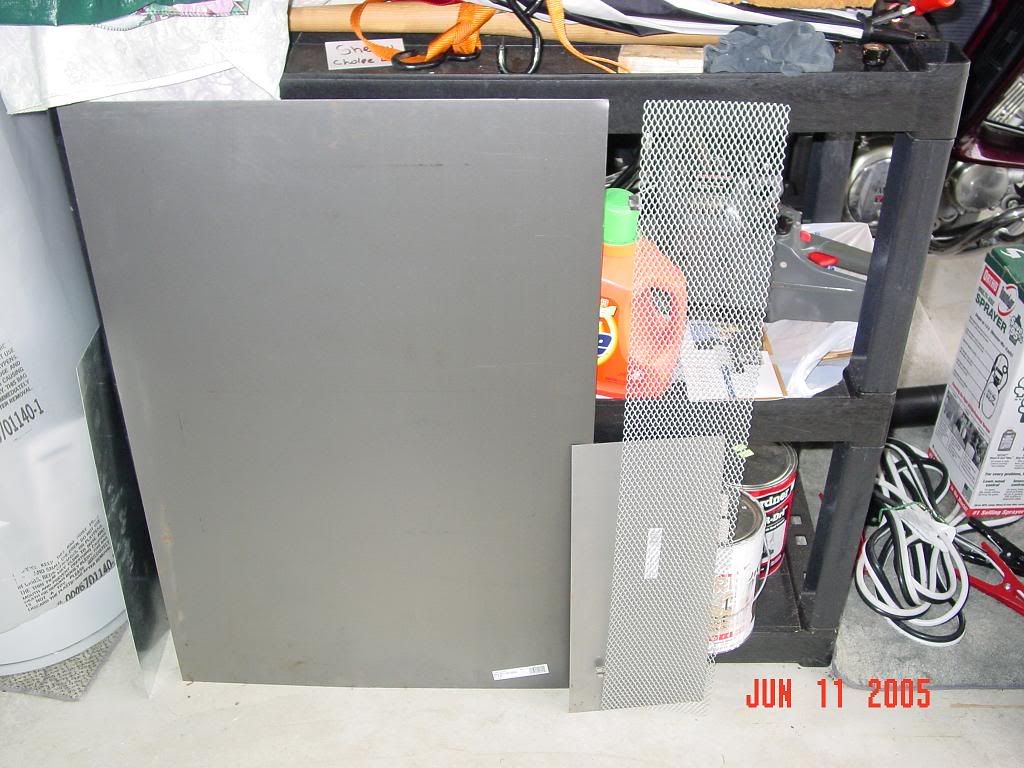
After I cut the sheets for the panels. I haven't sanded off the rust yet, but i'll do that before I begin to paint:
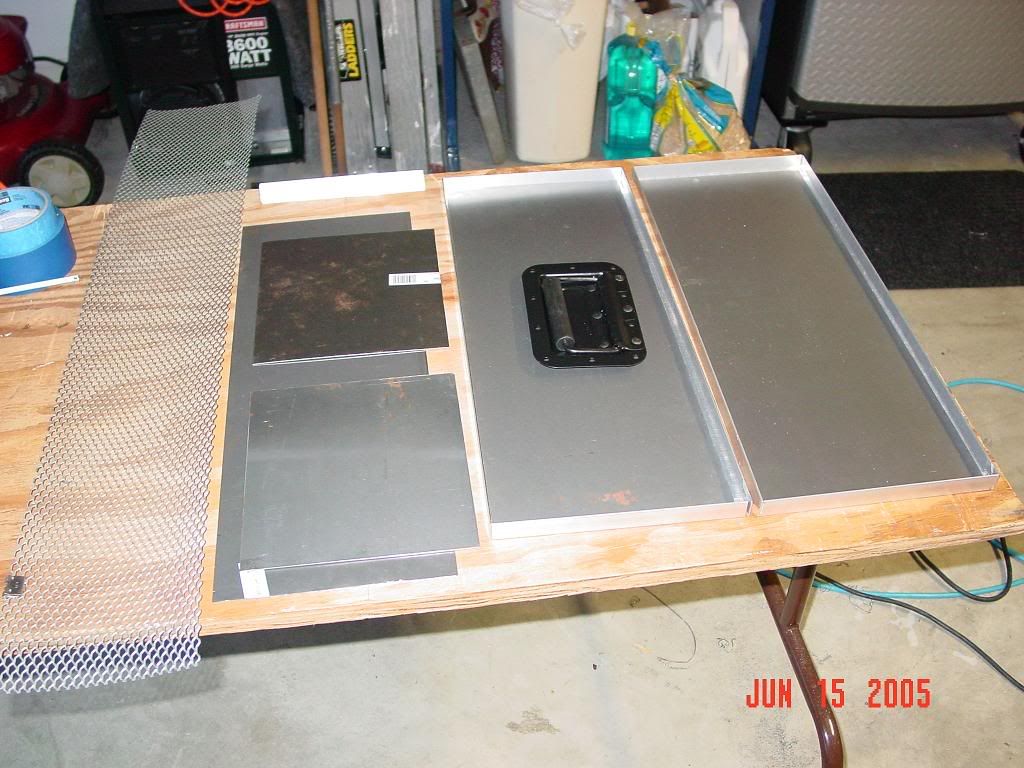
Closeup of the handle:
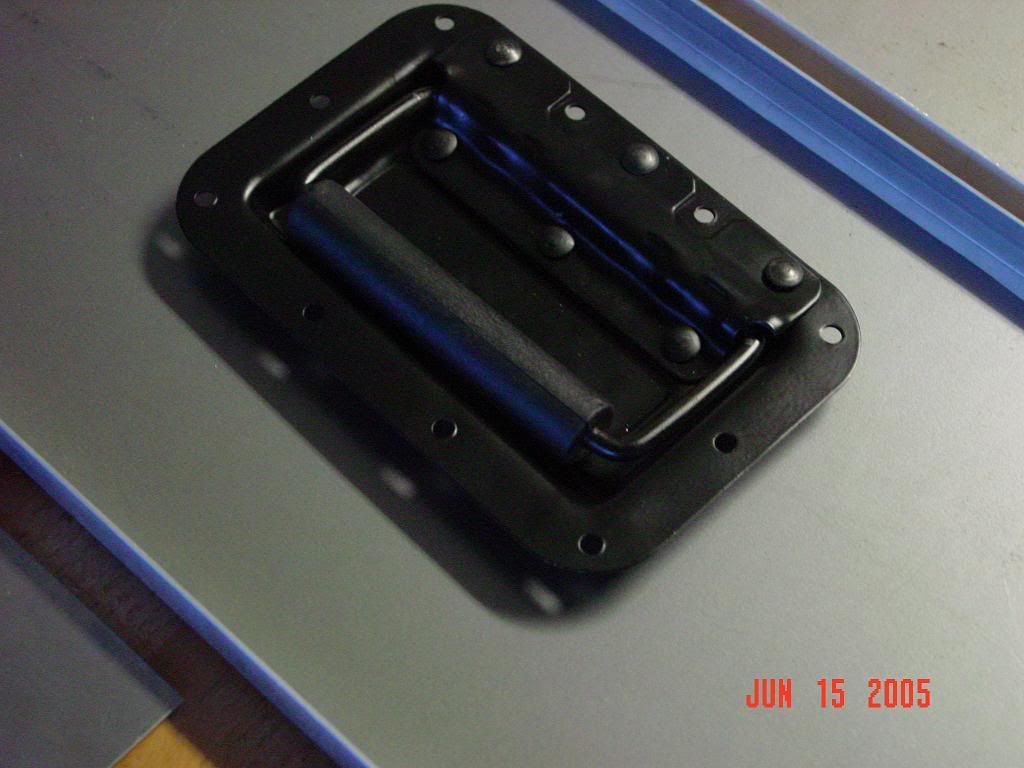
My next step is to double check that everything fits and is flush. This has been the most difficult thing for me, but that could be attributed to my lack of experience and metal cutting tools. But hey, a jigsaw and a rotating power tool (kinda like a dremel, but better) get the job done .
.
After that, I will line everything up then drill holes for the rivets. I'll then sand the panels and angles until they are flat, apply primer, sand, pain - that whole deal. After that, I'll use rivets and/or screws and nuts to put together the box. Installation of components will follow.
I still need to build a fan controller circuit, but it isn't absolutely necessary, so I'll probably do this after everything is up and running.
So, what do you guys think? Suggestions and comments are welcome.
To sum it up, I am building an external w/c box that will sit on top of my case. Inside it will have dual radiators, a pump, a res, fans, and a fan controller.
I haven't finished a ton yet as I have been trying to carefully plan things out (I am a metal-working newbie) but at least it looks like I am getting somewhere.
Here is a rough autocad picture of what I am doing on the inside, although I have flipped the radiators and moved around some components in the final design.

Here is the list of parts:
Eheim 1250
77' Bonneville heater core
86' Chevette heater core
D-tek Whitewater CPU block
D-tek GPU block w/ homemade adapter for 6800 GT
3 Panaflo U1A fans
Plexiglass shroud for the bonnie core from a previous project
36'' x 48'' sheet of 22 AWG steel
8'' x 18'' sheet of 22 AWG steel
1 Zinc plated recessed handle (I love this thing)
16' of angled aluminum for the frame
Some aluminum mesh
Other misc stuff (black car paint, primer, screws, rivets, etc)
Anyway, here is a pic after I made the top and bottom frame:

Some of the inside parts, half put together. I decided to finish assembly one the box is completed - it makes more sense that way.

Some of the materials that will be used to make the box

After I cut the sheets for the panels. I haven't sanded off the rust yet, but i'll do that before I begin to paint:

Closeup of the handle:

My next step is to double check that everything fits and is flush. This has been the most difficult thing for me, but that could be attributed to my lack of experience and metal cutting tools. But hey, a jigsaw and a rotating power tool (kinda like a dremel, but better) get the job done
After that, I will line everything up then drill holes for the rivets. I'll then sand the panels and angles until they are flat, apply primer, sand, pain - that whole deal. After that, I'll use rivets and/or screws and nuts to put together the box. Installation of components will follow.
I still need to build a fan controller circuit, but it isn't absolutely necessary, so I'll probably do this after everything is up and running.
So, what do you guys think? Suggestions and comments are welcome.
![[H]ard|Forum](/styles/hardforum/xenforo/logo_dark.png)
